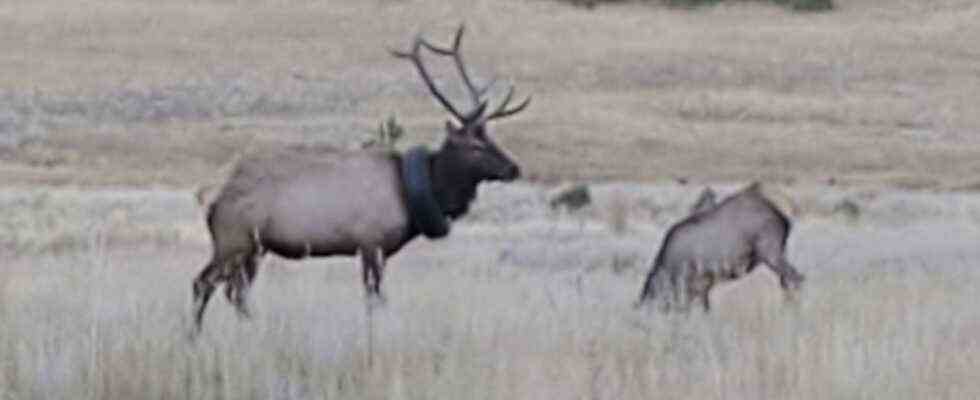What looks like a fancy necklace has been a burden for the poor animal for years …
For two years an elk with a huge tire around its neck ran through the wilderness of Colorado (USA). Now he could be freed from it.
The four-year-old, 270-kilogram bull was sighted and anesthetized by rangers on Saturday evening near Pine Junction, southwest of Denver, Colorado. It was the fourth attempt by the rangers to help the animal in the past few weeks. In order to free the animal from its burden, the five-pointed antlers had to be cut off.
“We would have preferred to cut the tire and leave the antlers for the rutting season, but the situation was so dire that we had to somehow remove it,” said Scott Murdoch of Colorado Park and Wildlife.
Murdoch and colleague Dawson Swanson estimate that by removing the tire and antlers, the animal now weighs about 16 kilograms less. “The tire was full of wet pine needles and dirt,” said Murdoch. There was probably about five kilograms of rubbish in it.
Fortunately, there was still a little room to move around the neck. The animal only had a small wound under the tire – and the hair was a bit rubbed off.
Game rangers first spotted the deer with the hoop around its neck in July 2019 when they were conducting a sheep and mountain goat survey in the Mount Evans Wilderness. The young deer either got the hoop around his neck as a calf or in winter when he shed his antlers, Colorado Parks and Wildlife said. It could be that the curious animal stuck its head in a pile of tires.
And the tire is not the first obstacle of its kind. They have seen time and again how deer, elk, bears and other wild animals get caught in a number of objects. These include swings, hammocks, clotheslines, decorative or Christmas lights, furniture, cages, laundry baskets, soccer goals and volleyball nets.
Wapitis can weigh up to 450 kilograms. The antlers reach a length of up to 1.50 meters and weigh up to 15 kilograms. Every year from February onwards, the bone-made antlers are shed. They grow again until late summer in order to showcase the strength and health of the wearer during the rut in autumn.

